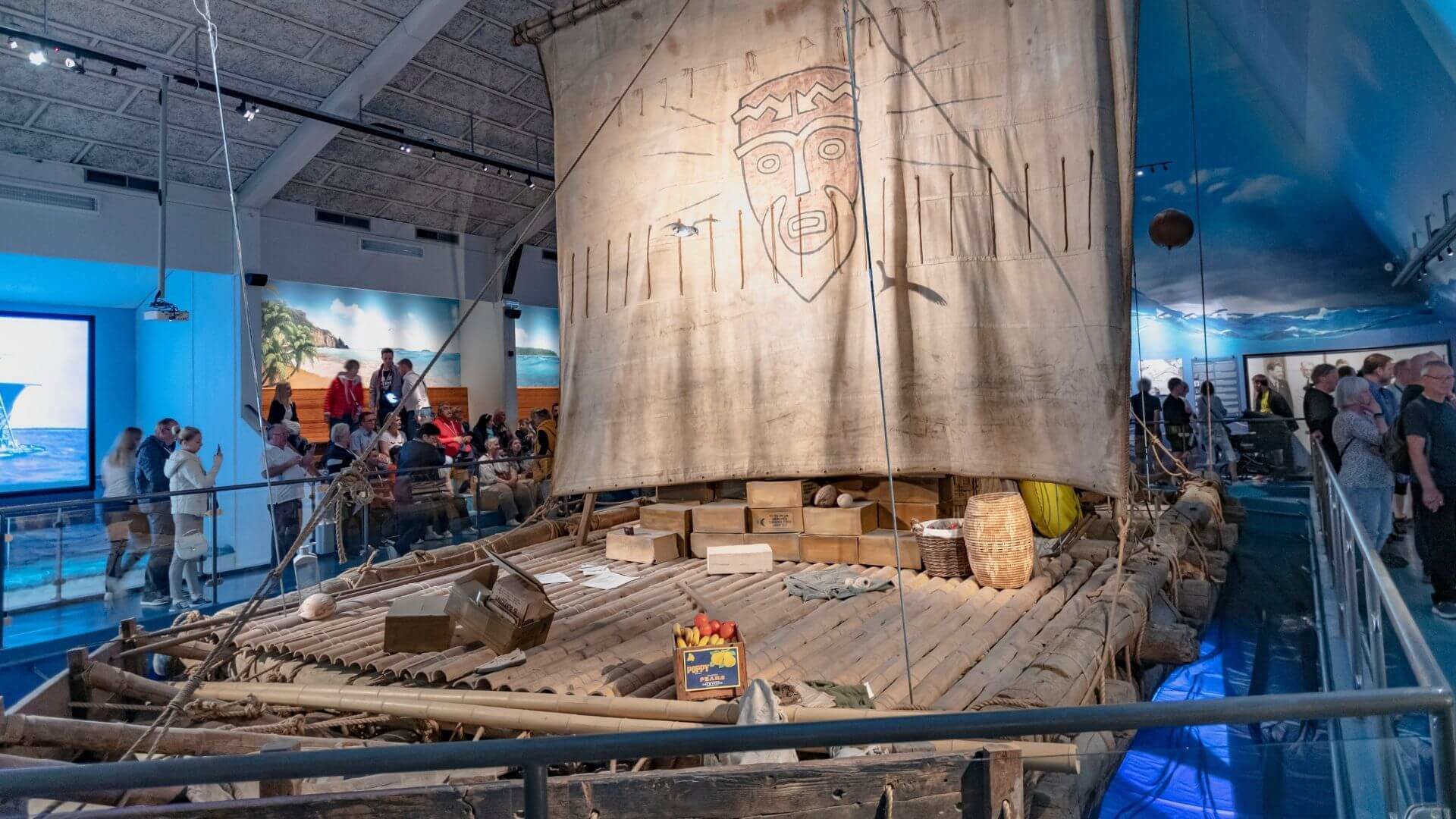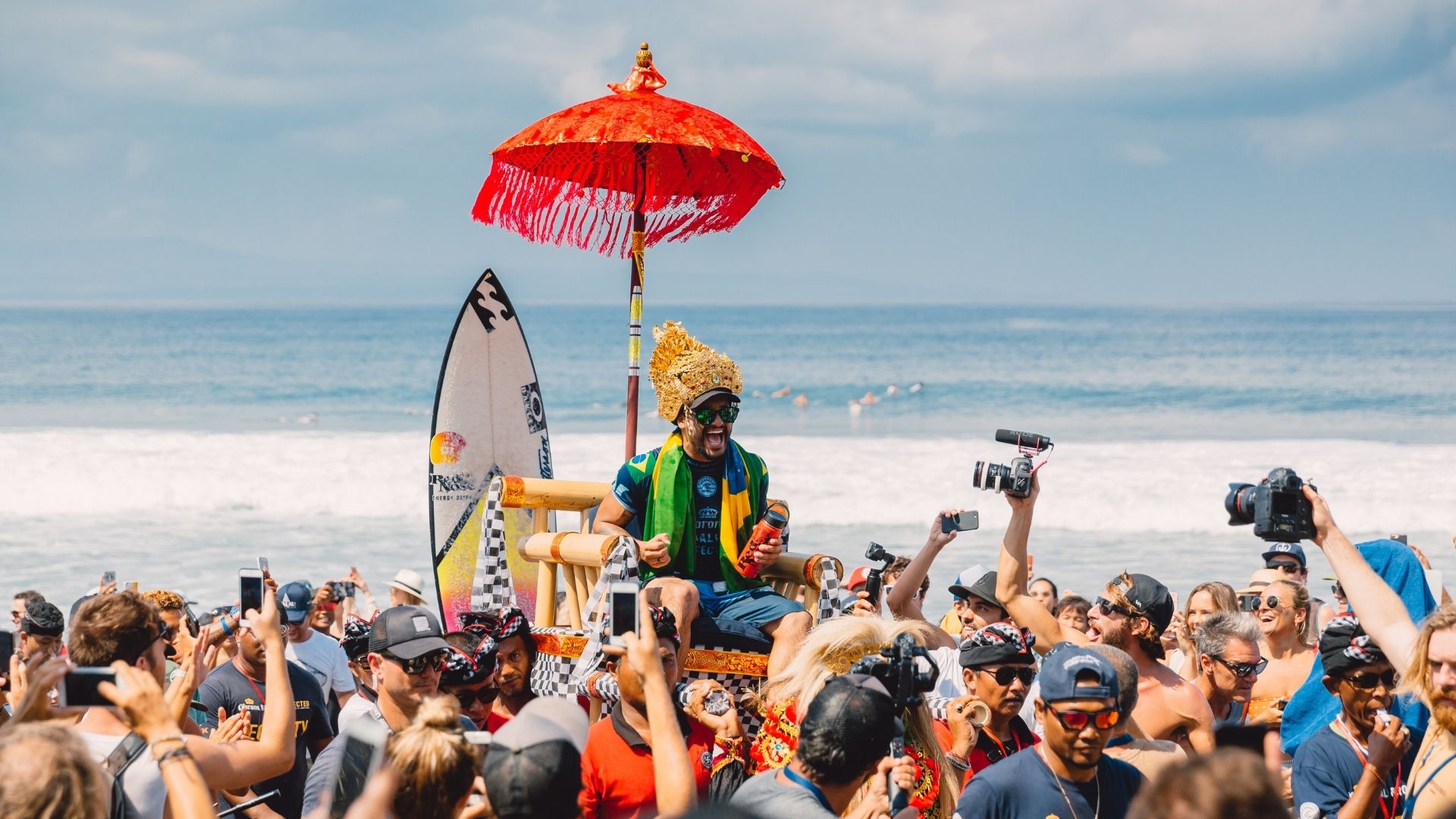When watching a WSL event, you may believe surfers have been busting backflips and 360s for millennia. The fact is that wave riding has evolved over the centuries to the sport that it is today. David Attenborough might even argue that humans have been riding waves since before we were human.
While most credit surfing’s evolution to the Hawaiians, there is some debate about the origin of surfing. Whatever it may be, surfing inspires a love of the ocean and the love of being in the water which still lives on in wave riders of all shapes and sizes today. Read on to discover surfing’s elusive history, how it has changed over the years and how it has become what it is today.

The legendary Kon-Tiki raft at the Kon-Tiki Museum.
This connection originated in part due to the shared culture of wave riding in Polynesia and South America. Indigenous populations of South Americans have been devising canoes and paddles for riding waves for centuries. While this form of wave riding is undoubtedly different from the technology used by modern surfers, this suggests that surfing may have originated from wave riding in typical boats and evolved to wooden planks.

Image credit: Surfing Association of Papua New Guinea – Andy Abel
Captain Cook of Middlesbrough England was the first westerner to lead an expedition to Hawaii and his Surgeon, William Anderson documented what we now call surfing. He described native Hawaiians during his expedition in the late 1700s as nearly amphibious. These behaviours were due to their natural comfort both in and out of the water. William documented the first surfers gliding – commonly known as “wave sliding” – down the faces of Waikiki using long oblong wooden planks.
The Hawaiians had been surfing by this point already for centuries. The sport evolved around a series of rules and taboos that dictated nearly all of the Hawaiian culture known as Kapu. Wave sliding, or later known as “the sport of kings” was practised by all social classes in Hawaiian society. Proficient surfing led to success out of the water in the form of everything from universal respect, to romantic exploits.
Certain breaks were reserved for elite members of the community and variations in board size and shape were rooted in status. While by today’s standards, we might assume the dude with the 15-foot board is compensating for something, a royal member of Hawaiian society often road boards twice the size of what we might see today weighing up to 400 pounds.
Colonisation, as it often does, nearly wiped out all indigenous society and with it surfing’s place in Hawaiian culture. European and American Missionaries saw surfing as sinful and discouraged participation in its practice or ceremony. Where one might typically pray for waves with their local Kahuna after a flat spell, missionaries sought to root out indigenous spiritual traditions. You think they’d cut a guy some slack; even Jesus was known to cross-step occasionally.
Boards carved from Koa or Breadfruit trees lay dormant for decades while white settlers nearly wiped out the Hawaiian people. From a population of almost 1 million individuals, guns, germs, and steel took its toll leaving fewer than 40,000 remaining by the end of the 1800s.
In the early 1900s surfing had already started to leave Hawaii with the illustrious Duke Kahanamoku and lesser-known George Freeth. Spreading surfing to North America and Australia resulted in many transplanted pilgrims hoping to learn to surf in Hawaii. Alexander Hume Ford was one such transplant originally from the United States. He quickly rose to be a surf champion who had big plans for surfing. Ford was hoping that the spread of surfing would inspire further colonisation of the Hawaiian islands by white European settlers. While Hawaii did become a state in 1959, it remains one of the most diverse countries in the nation despite Ford’s efforts.
As a result of the new display of surfing across the globe, surfing quickly grew by popular demand. With new surfers came new technological advancements with Tom Blake’s first hollow wooden surfboard in 1929 and later the innovation of the fin in 1935. Fibreglass became an excellent substitute for wood in the 1940s, and the invention of the wetsuit from Jack O’Neill increased access to surfing for aspiring wave riders the world over.
Surfing continues to change and evolve as the sport spreads across the globe. In recent years, we’ve seen the innovation of human-made waves like the wave garden and 11-time world champion Kelly Slater’s Surf Ranch.
In 2021, surfing will be an official Olympic sport (all going to plan) despite the obvious postponement from 2020, a year we all most likely would like to move on from. And despite the best efforts of 1800’s missionaries, surfing has grown to be more than a billion-dollar industry.

Italo Ferreira after winning the 2018 WSL Corona Bali Protected in Keramas, Bali before winning the world title in 2019.
Whatever changes may come our way, we can still expect surfing to be a sport that embraces a love of the ocean. So where does surfing go from here? We yet don’t know what the effect of climate change will be on surfing. With potential for sea levels to rise, we may see the formation of urban surf breaks in areas that were once plentiful with ocean surf? Alternately, we may see an increase in a push for more sustainable surf products and solutions to the accumulation of plastics.
Written by Scott Shepherd.


